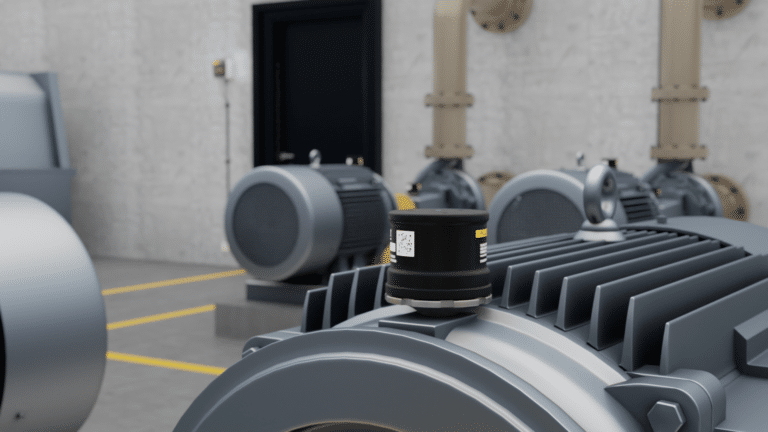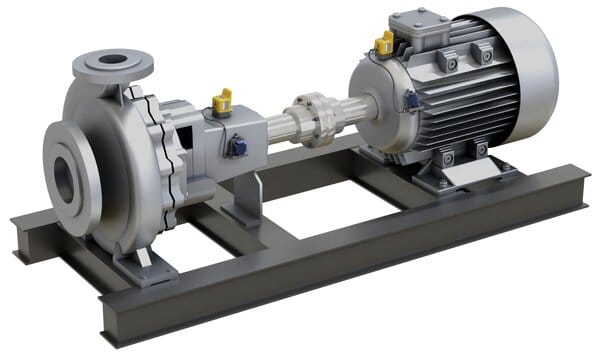Wireless Vibration Monitoring Makes It Easier Than Ever to Monitor Your Assets Remotely
With almost every industry forced to make some adjustments to their in-person operations, the pandemic revealed the importance of remote condition monitoring to many maintenance professionals. While remote monitoring technology is not new, the pandemic accelerated its adoption — highlighting the value of connectivity for the future of maintenance.
A 2020 survey conducted by Fluke Reliability indicated that as the pandemic began, plant managers and maintenance professionals immediately prioritized investments in data collection and remote asset management technology. Its advantages, such as increased worker safety and workplace flexibility, were readily apparent in a pandemic world.
However, despite the renewed interest in remote condition monitoring and other IIoT solutions, many maintenance and reliability teams also reported that lack of time and resources, depleted budgets, and concern from management had complicated efforts to move forward with these plans.
There is no one-size-fits-all solution to these challenges. But these tools and technologies offer cost savings, improved ROI, increased asset health, and better machine performance. Condition monitoring can help companies succeed today and stay adaptable for tomorrow.
Why Start With Wireless Vibration Monitoring
One of the fastest ways to get started with condition monitoring is using wireless vibration monitoring. Today’s wireless vibration sensors are more accurate, reliable, and easy to set up and maintain than earlier iterations. As a result, the past five years have seen widespread adoption of these technologies. They are a powerful entry point for maintenance teams trying to launch condition monitoring programs.
While technology limitations previously made many wireless sensors expensive or inefficient, sensors now are compact, economical, and do not require large amounts of bandwidth. Some feature a much longer battery life and some do not need a battery at all — instead harvesting heat or light from their surroundings. Implementing wireless vibration sensors for a portion of your assets is a low-risk way to jumpstart a condition-based maintenance program.
Wireless vibration sensors can provide snapshots of machine health and performance in real time. Changes in vibration patterns can be quickly identified, allowing potential problems to be fixed before they escalate into downtime.
5 Benefits of Wireless Vibration Monitoring
Wireless vibration sensors have been around for a few decades, but now they’re affordable and reliable enough for widespread use. If you haven’t yet adopted wireless vibration sensors into your maintenance program, here are five reasons to get started today:
1. Vibration data is one of the strongest indicators of asset condition and is especially valuable for high-speed or rotating machinery. All machinery vibrates, so monitoring changes in vibration is an effective way to identify issues early. Today’s sensors are designed to track three axes of vibration, and some also identify changes in temperature that can indicate when a machine requires attention.
2. Piezoelectric technology and other advancements are built in: Some newer sensors are built with piezoelectric sensors, which provide higher-resolution and higher-frequency vibration readings that are more in-depth than other types of sensors can offer.
3. Today’s sensors are supercharged by powerful software: The best wireless vibration sensors are backed by flexible technology that enables maintenance teams to constantly monitor and analyze data readings from critical assets. Software should allow for customizable frequency band alarms, pre-programmed thresholds, trend visualization, and notifications. This way, maintenance teams can determine critical next-step actions. Real-time insights allow for extended peak operating performance and more effective use of maintenance team resources.
4. Engineers can use predefined data parameters or set their own: With many of today’s wireless sensors, data thresholds are predefined to the asset type. Engineers can set their own thresholds if they wish. Data, trend charts, and insights can be generated immediately, based on ISO standards, for screening or analyzing potential machine risks and faults.
5. Monitor all of your assets to prioritize maintenance activities: Whether you start small with just a few assets or move to monitoring all assets throughout your facility, wireless vibration monitoring is highly scalable. This enables maintenance technicians to focus their time on the assets that actually require attention rather than spend time and resources on unneeded manual checks.
Software Is Just as Important as Hardware
Software is the differentiator between good and great monitoring systems. Sensors collect the data, but software helps you analyze that data and put it into action. Be sure your vibration monitoring solution includes software that provides your team with clear, actionable insights.
Additional Considerations to Scale Vibration Monitoring
By leveraging wireless sensors to jumpstart your condition-based maintenance program, you avoid having to work with disparate tools and less-than-compatible systems. Most sensors can be purchased in packs of a dozen or more, enabling you to experiment with a portion of assets and expand your program over time.
Another point: While the focus here is on wireless sensors, wired sensors can also be used and even more effective in specific circumstances. For instance, wired sensors fill an essential void in sections of your plant that lack Wi-Fi coverage. Additionally, they are especially well-suited for your production-critical, high-end machines that mandate high volumes of high-resolution data to maintain.
Wired sensors can integrate successfully with wireless sensors in a large-scale condition-based maintenance program. But to jumpstart and initially expand your condition-based maintenance program, wireless sensors are a great choice.
Don’t Go It Alone
Typically, condition-based maintenance initiatives fail for a couple of reasons:
1. Companies launch programs that are too big and complicated and lack the flexibility to course-correct early in the process.
2. They try to go it alone.
This second reason is easily avoidable: Find a partner that has the expertise to help you. Leveraging outside training and guidance from experts can be done on a smaller scale, bring a valuable outside perspective, and reassure you that reliability is best as a shared journey, not a solo one. Selecting the right partner can help you get started strong, scale quickly, and let you focus most of your time and resources on day-to-day demands.






